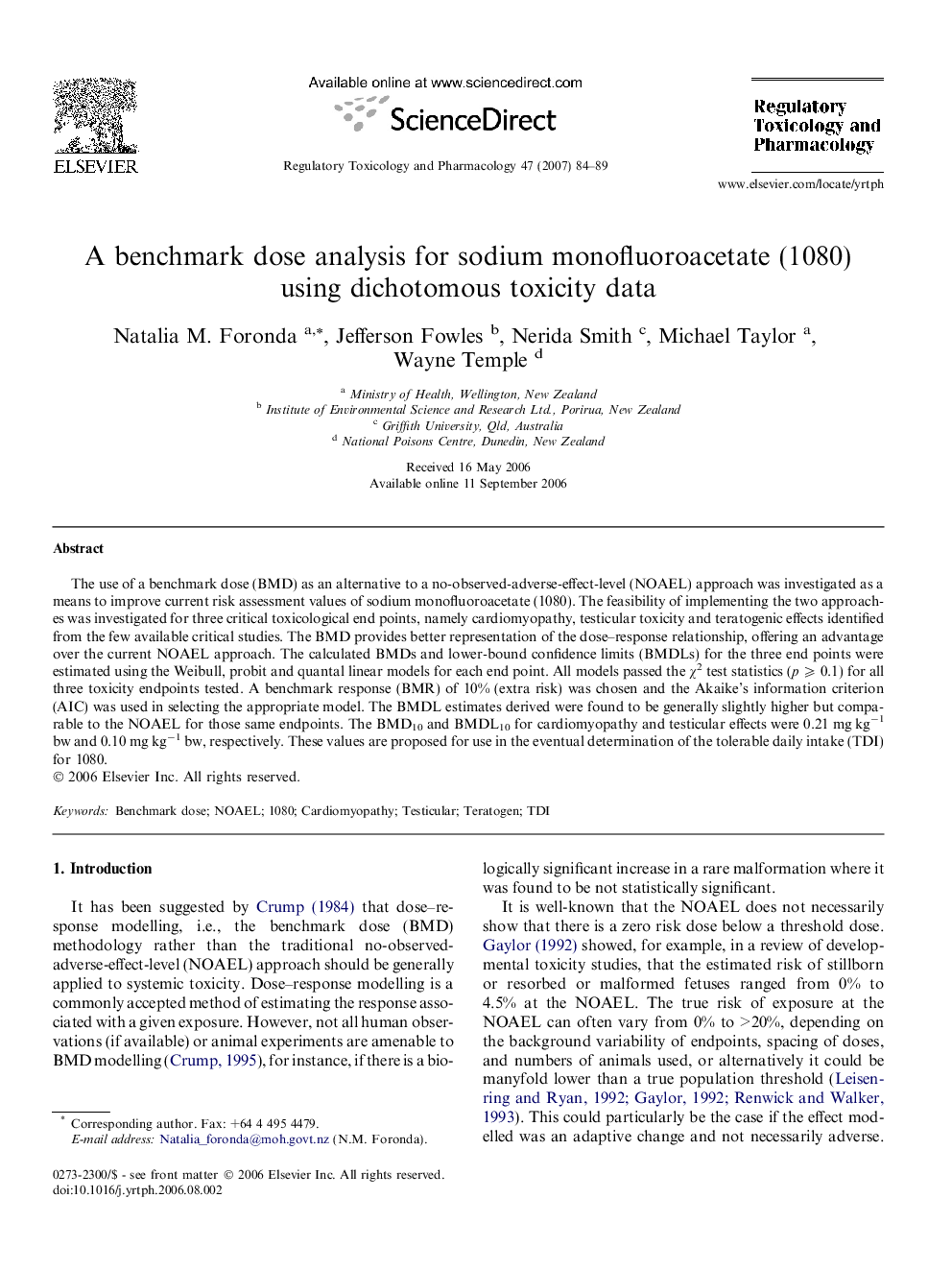| Article ID | Journal | Published Year | Pages | File Type |
|---|---|---|---|---|
| 2593165 | Regulatory Toxicology and Pharmacology | 2007 | 6 Pages |
The use of a benchmark dose (BMD) as an alternative to a no-observed-adverse-effect-level (NOAEL) approach was investigated as a means to improve current risk assessment values of sodium monofluoroacetate (1080). The feasibility of implementing the two approaches was investigated for three critical toxicological end points, namely cardiomyopathy, testicular toxicity and teratogenic effects identified from the few available critical studies. The BMD provides better representation of the dose–response relationship, offering an advantage over the current NOAEL approach. The calculated BMDs and lower-bound confidence limits (BMDLs) for the three end points were estimated using the Weibull, probit and quantal linear models for each end point. All models passed the χ2 test statistics (p ⩾ 0.1) for all three toxicity endpoints tested. A benchmark response (BMR) of 10% (extra risk) was chosen and the Akaike’s information criterion (AIC) was used in selecting the appropriate model. The BMDL estimates derived were found to be generally slightly higher but comparable to the NOAEL for those same endpoints. The BMD10 and BMDL10 for cardiomyopathy and testicular effects were 0.21 mg kg−1 bw and 0.10 mg kg−1 bw, respectively. These values are proposed for use in the eventual determination of the tolerable daily intake (TDI) for 1080.
